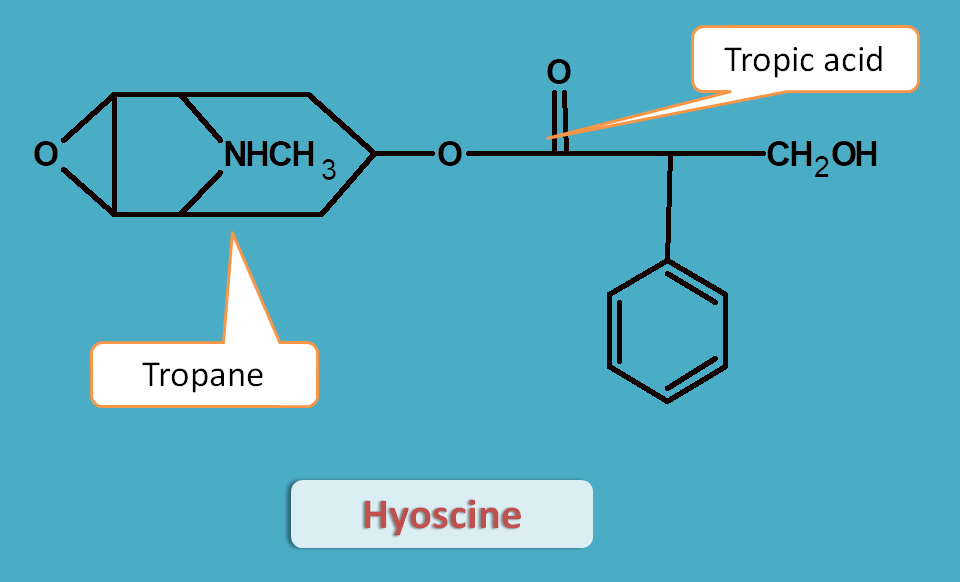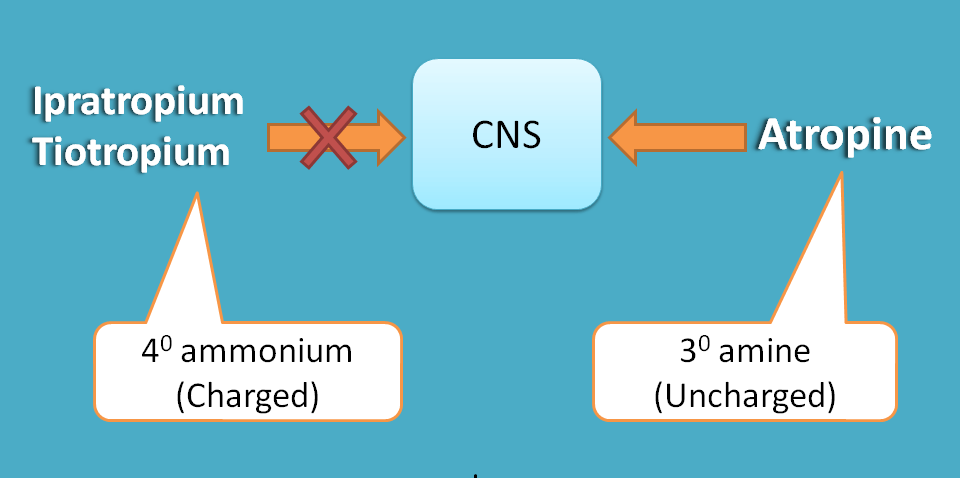Muscarinic antagonists
Atropine and hyoscine are natural tropane alkaloids obtained from datura and belladona species. Atropine is an ester of tropanol and tropic acid. Hence on hydrolysis it yields these two compounds.

Hyoscine has a small modification in structure with epoxide bridge at 7th and 8th position of tropane ring. On hydrolysis it yields scopine and tropic acid.

Similarly, drugs like ipratropium and tiotropium are semi-synthetic derivatives derived from tropane alkaloids. One of the important difference between these drugs and atropine is former are quaternary ammonium compounds and later is a tertiary amine.

Atropine can cross the blood brain barrier whereas ipratropium and tiotropium are ionized, hence can’t cross the blood brain barrier specifically acting on bronchioles.
Drugs like cyclopentolate and tropicamide are used as mydriatics in the form of eye drops.
Darifenacin, tolterodine and oxybutynin are selective for bladder and used as bladder relaxants.
How they act?
These drugs bind to the muscairinic receptors preventing the action of acetylcholine thereby inhibit cellular effects.
These drugs produce competitive block and when acetylcholine levels increase the action of these dugs decreases.